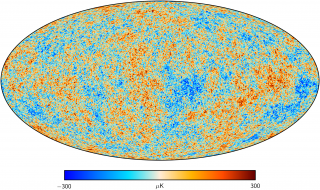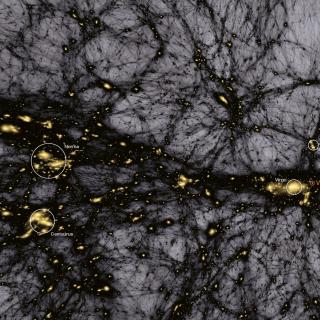Bibcode
Quispe-Huaynasi, F.; Roig, F.; Daflon, S.; Pereira, C. B.; Placco, V. M.; Jiménez-Esteban, F.; Galindo-Guil, F. J.; Alvarez-Candal, A.; Alcaniz, J.; Angulo, R. E.; Cenarro, J.; Cristóbal-Hornillos, D.; Dupke, R.; Ederoclite, A.; Hernández-Monteagudo, C.; López-Sanjuan, C.; Marín-Franch, A.; Moles, M.; Sodré, L.; Varela, J.; Vázquez Ramió, H.
Bibliographical reference
Monthly Notices of the Royal Astronomical Society
Advertised on:
7
2023
Citations
2
Refereed citations
1
Description
High-velocity stars in the Milky Way are related to extreme astrophysical phenomena. In this work, we characterize 28 stars with Galactocentric velocities higher than 400 $\mathrm{km\, s^{-1}}$ observed in the Javalambre Photometric Local Universe Survey Data Release 2 (J-PLUS DR2) survey. We combine J-PLUS photometry with astrometric data from the Gaia DR3 catalogue to analyse the kinematics, dynamics, and fundamental stellar parameters of these stars. Our results indicate that most of the 28 stars have typical behaviour and properties of halo stars, and some of them could be related to the disk population. Some of the halo stars may belong to known structures that originated from mergers of other systems with the Milky Way.
Related projects

Anisotropy of the Cosmic Microwave Background
The general goal of this project is to determine and characterize the spatial and spectral variations in the temperature and polarisation of the Cosmic Microwave Background in angular scales from several arcminutes to several degrees. The primordial matter density fluctuations which originated the structure in the matter distribution of the present
Rafael
Rebolo López

Cosmology with Large Scale Structure Probes
The Cosmic Microwave Background (CMB) contains the statistical information about the early seeds of the structure formation in our Universe. Its natural counterpart in the local universe is the distribution of galaxies that arises as a result of gravitational growth of those primordial and small density fluctuations. The characterization of the
FRANCISCO SHU
KITAURA JOYANES